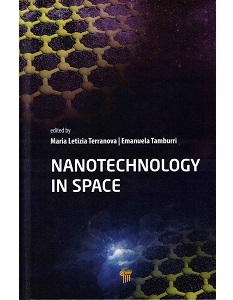Nanotechnology is one of this century’s ‘buzzwords’ and has been applied, to some extent, to almost every branch of technology, so it is no surprise that it should be applied to space. This academic volume comprises six main sections, covering nanotechnology for space power devices; composites and other materials; 3D-printable materials; nano-based coatings and the role of nanotech in the space economy.
This final chapter is an interesting innovation in a book that is, ostensibly, narrowly focused on a specialised branch of technology. It covers the respective roles of government organisations and private investors (venture capital firms and business angels) and the growing shift towards the latter. In researching trends, the authors’ methodology includes using patent analysis to produce data in the various nanotech application areas and, although they realise that “the number of patents is not in itself a sufficiently accurate indicator” of capabilities, it provides a useful stepping-stone for other research.
The book is illustrated in monochrome and colour and includes a number of appendices, a reference list and an index, the latter of which is crucial for further research on the topic. Some of the text could have benefitted from a little more ‘language editing’ to correct the use of the definite article and references to “spatial stations”, for example, but this is a minor gripe considering it is not intended to be a work of literature.
It is, by contrast, an academic textbook aimed at researchers in the field of nanotechnology and, because of its high price, is likely to be purchased predominantly by technical libraries and research institutions. Notably, however, the fact that both editors hold patents in their chosen fields indicates that, in this case, the word ‘academic’ should not imply a lack of practicality in coverage. Nanotechnology is crucial for many advances in space technology and its application will continue to grow.











